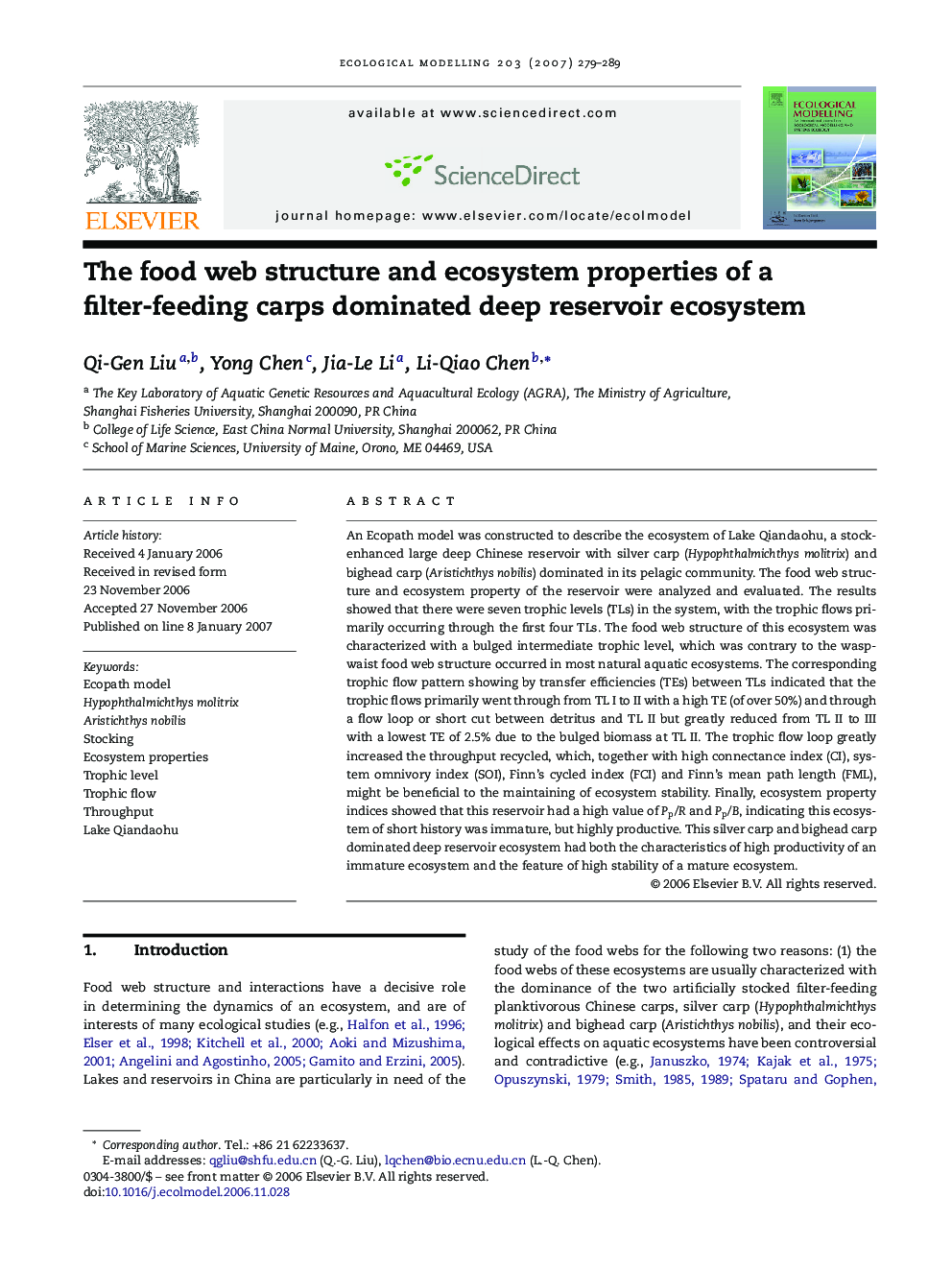| Article ID | Journal | Published Year | Pages | File Type |
|---|---|---|---|---|
| 4378551 | Ecological Modelling | 2007 | 11 Pages |
An Ecopath model was constructed to describe the ecosystem of Lake Qiandaohu, a stock-enhanced large deep Chinese reservoir with silver carp (Hypophthalmichthys molitrix) and bighead carp (Aristichthys nobilis) dominated in its pelagic community. The food web structure and ecosystem property of the reservoir were analyzed and evaluated. The results showed that there were seven trophic levels (TLs) in the system, with the trophic flows primarily occurring through the first four TLs. The food web structure of this ecosystem was characterized with a bulged intermediate trophic level, which was contrary to the wasp-waist food web structure occurred in most natural aquatic ecosystems. The corresponding trophic flow pattern showing by transfer efficiencies (TEs) between TLs indicated that the trophic flows primarily went through from TL I to II with a high TE (of over 50%) and through a flow loop or short cut between detritus and TL II but greatly reduced from TL II to III with a lowest TE of 2.5% due to the bulged biomass at TL II. The trophic flow loop greatly increased the throughput recycled, which, together with high connectance index (CI), system omnivory index (SOI), Finn's cycled index (FCI) and Finn's mean path length (FML), might be beneficial to the maintaining of ecosystem stability. Finally, ecosystem property indices showed that this reservoir had a high value of Pp/R and Pp/B, indicating this ecosystem of short history was immature, but highly productive. This silver carp and bighead carp dominated deep reservoir ecosystem had both the characteristics of high productivity of an immature ecosystem and the feature of high stability of a mature ecosystem.
